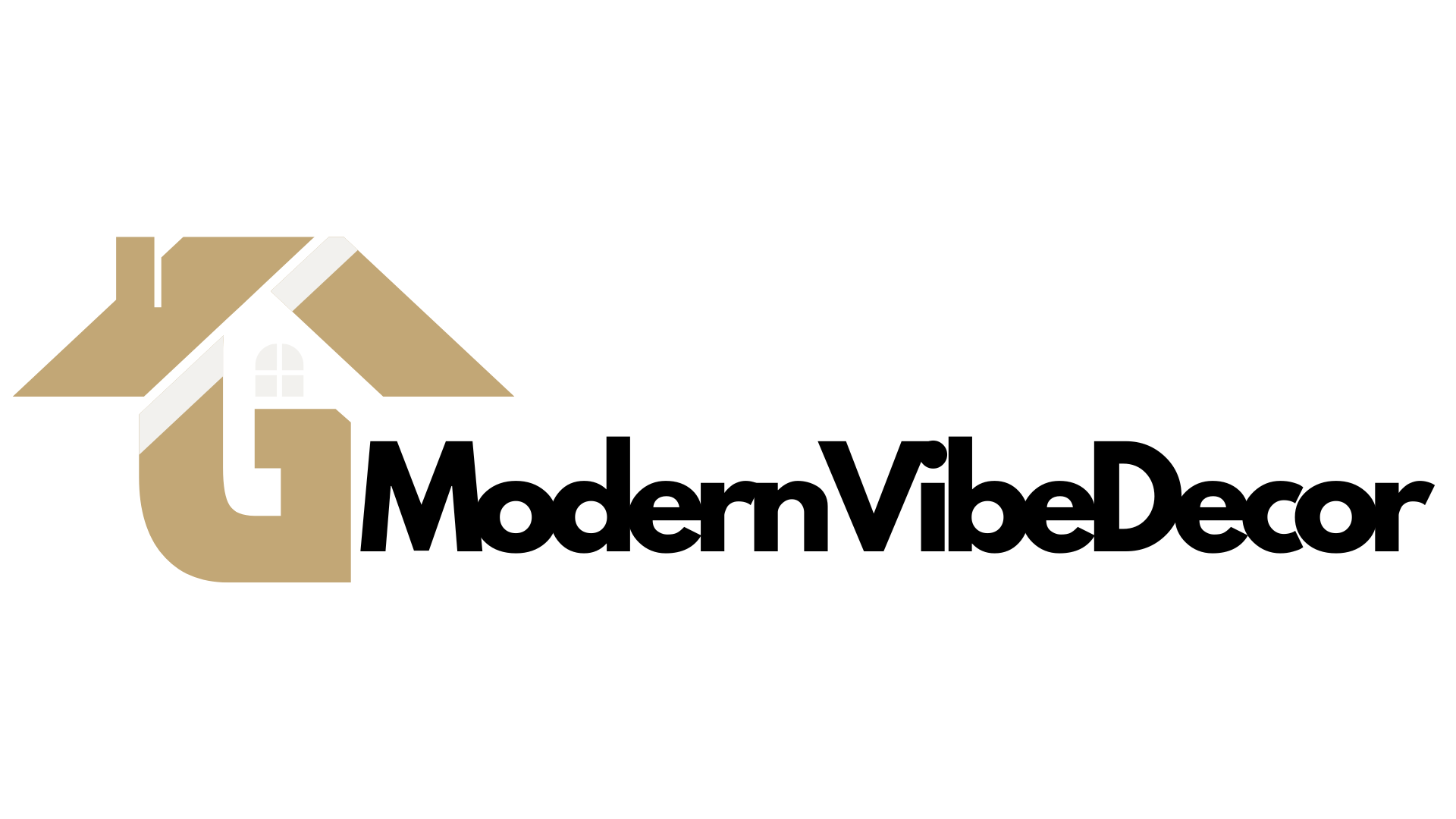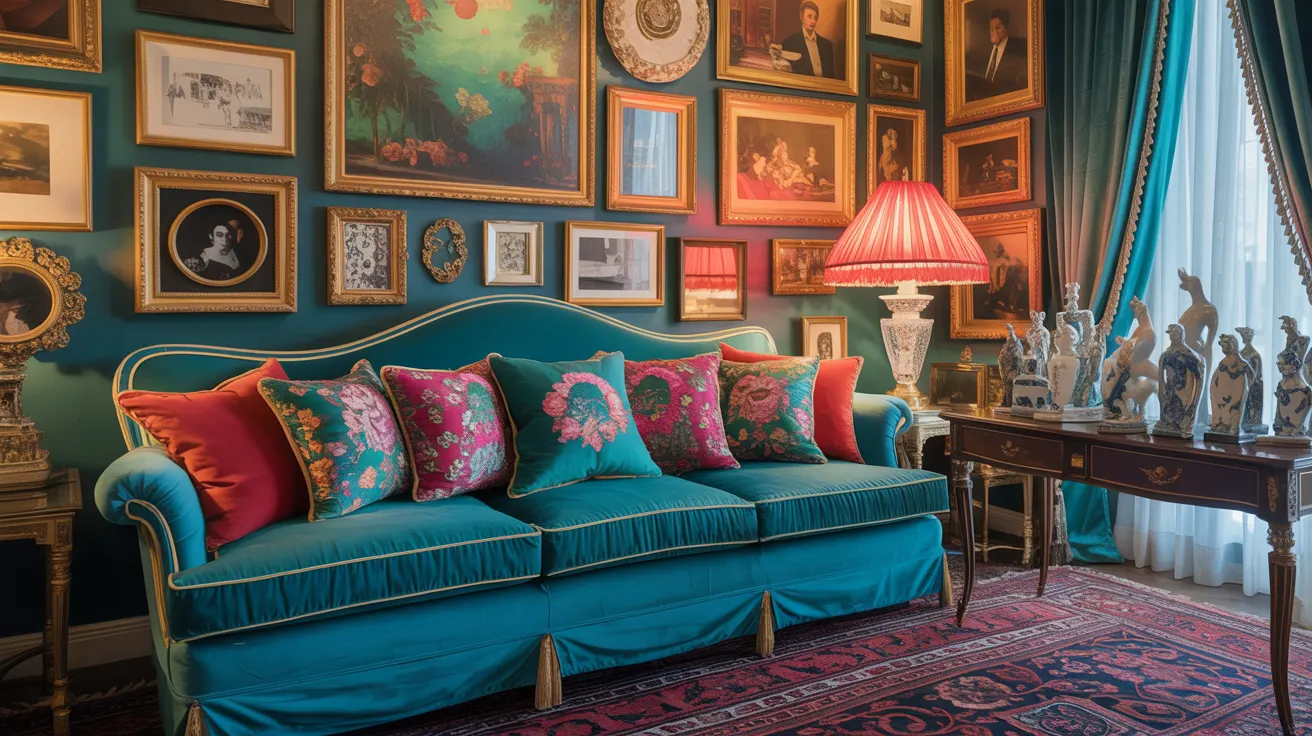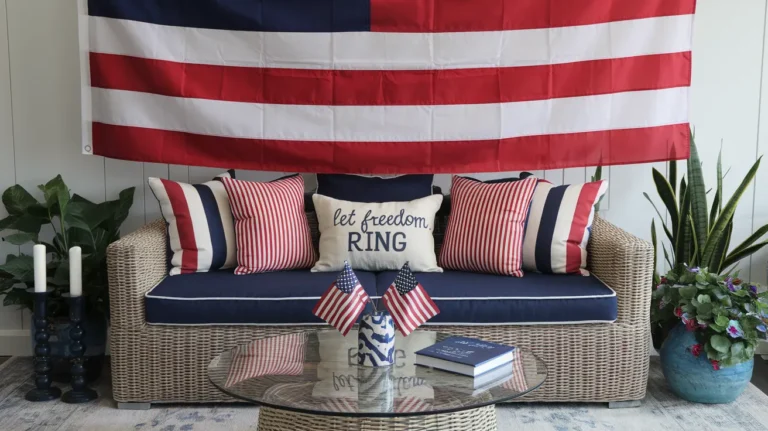Are you tired of seeing the same beige, barely-furnished “less is more” living rooms all over your Instagram feed? Do you secretly long for spaces filled with personality, color, and—dare I say it—actual stuff? Then it’s time to embrace maximalism, the design approach that boldly declares “more is more” and means it.
Maximalist living rooms aren’t just trendy; they’re a joyful rebellion against the sterile, catalog-perfect interiors that have dominated design for the past decade. They’re unapologetically exuberant, deeply personal, and never, ever boring.
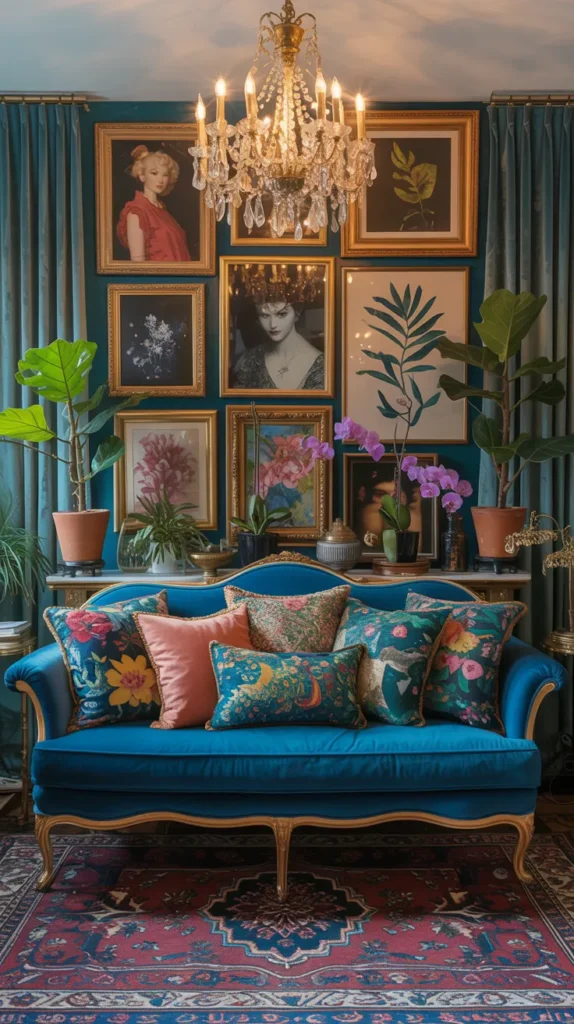
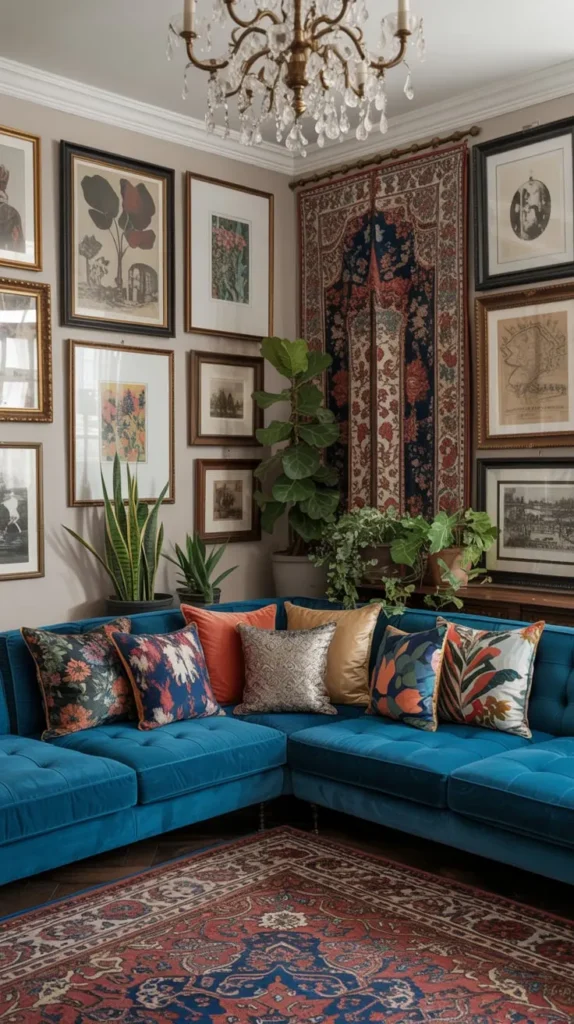
I’ve been helping friends embrace their maximalist tendencies for years (often after they confess in hushed tones that they’re “over” minimalism but afraid to admit it). So let’s dive into some glorious maximalist living room ideas that will transform your space from forgettable to absolutely unforgettable.
Why Maximalism Is Having a Moment (And Why It’s Here to Stay)
Before we get into specific design ideas, let’s talk about why maximalism has made such a dramatic comeback. After years of Marie Kondo-ing our homes into submission and embracing the stark simplicity of minimalism, many of us have realized something important: surrounding ourselves with things we love—yes, multiple things!—actually does spark joy.
Maximalism celebrates abundance, personality, and the art of thoughtful curation rather than ruthless elimination. It’s about creating spaces that tell your story, showcase your passions, and stimulate your senses. In a world where so many of our experiences have become digital, there’s something deeply satisfying about creating a tangible, layered environment that feels uniquely yours.
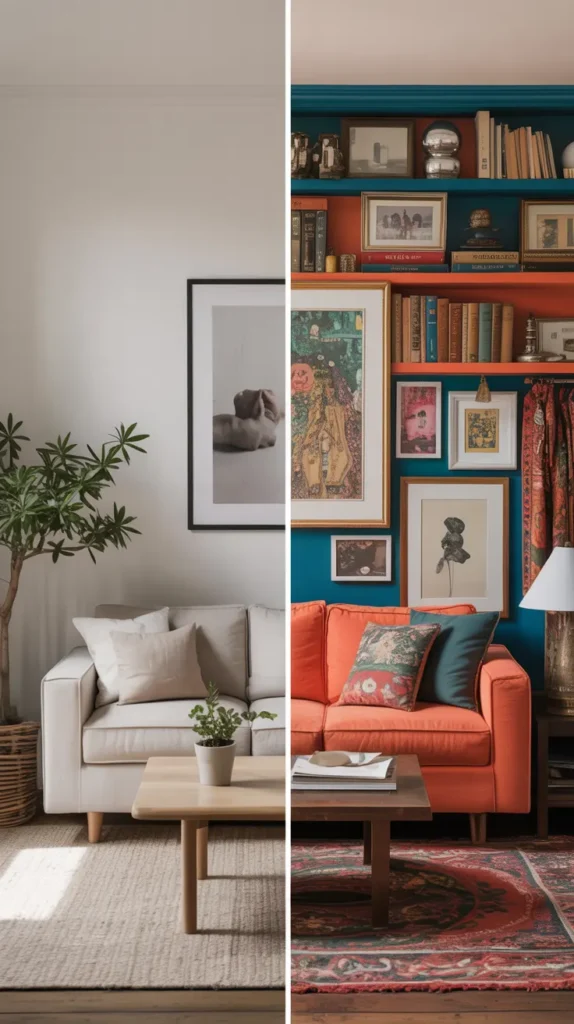
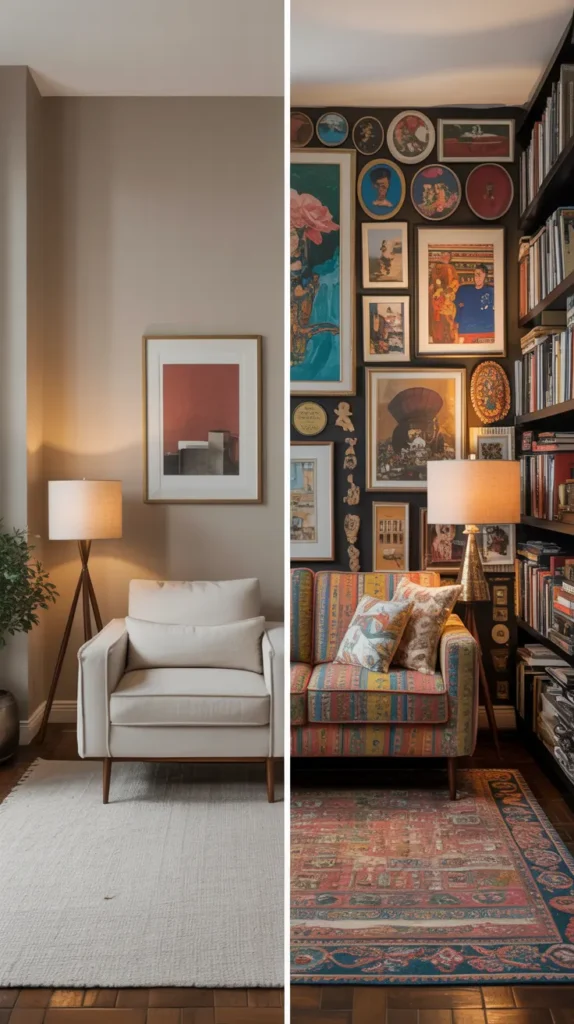
The beauty of maximalist design is that it isn’t just one look—it can range from elegant and sophisticated to whimsical and eclectic. What unites all maximalist spaces is their fearless approach to color, pattern, texture, and personal expression.
Embrace Bold Colors (And I Mean BOLD)
Forget “pops of color”—maximalist living rooms dive head-first into vivid, saturated hues that make a statement. This is your chance to use those daring colors you’ve always loved but been too afraid to commit to.
Some bold color strategies for maximalist spaces:
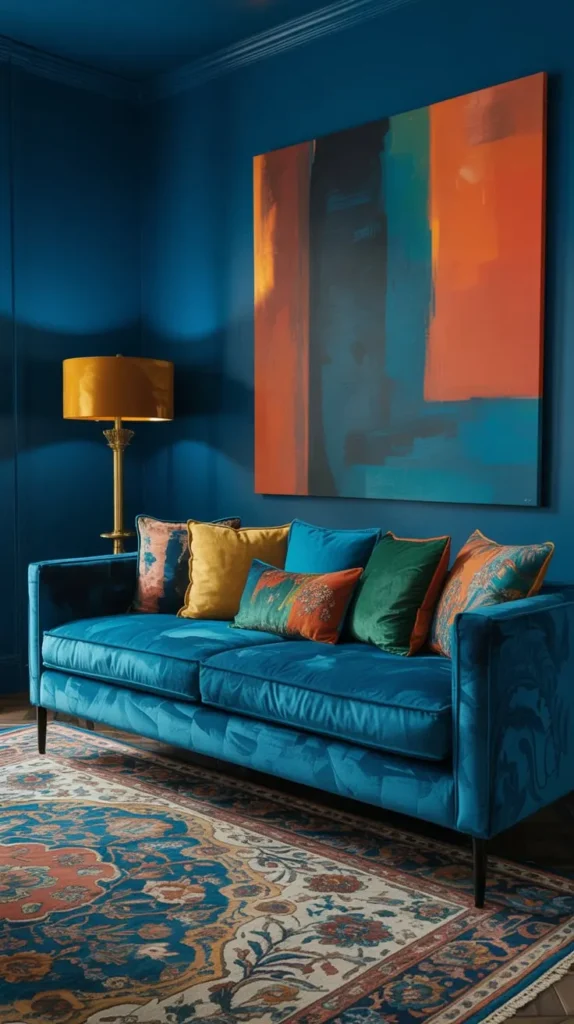
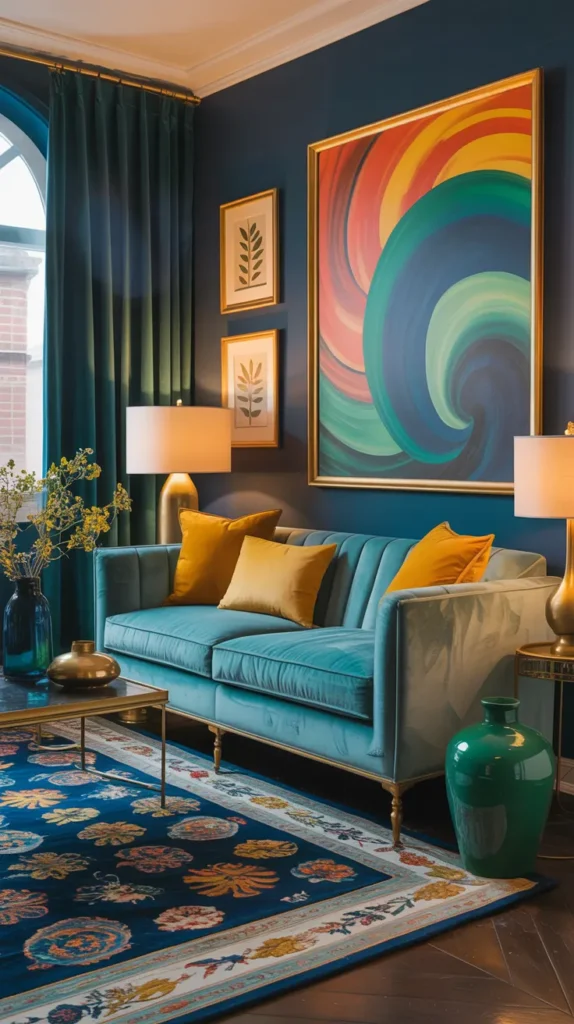
- Paint walls in rich jewel tones like emerald green, sapphire blue, or ruby red
- Invest in a sofa in a vibrant color rather than defaulting to neutral
- Layer multiple bold colors that sit opposite each other on the color wheel
- Use color to zone different areas within your living space
The secret to making bold colors work is to use them intentionally rather than randomly. Choose a color palette of 3-5 hues that will appear throughout the room in various elements. This creates a sense of cohesion despite the visual richness.
I recently helped a friend transform her living room using a palette of peacock blue, emerald green, and mustard yellow against a deep navy wall. The combination should have been overwhelming, but because these colors repeated throughout the space in different proportions, the result felt intentional and harmonious rather than chaotic.
Pro tip: If you’re color-nervous but maximalist-curious, start with a neutral backdrop (walls and larger furniture) and layer in color through art, textiles, and accessories. You can always go bolder as your confidence grows!
Layer Textures Like a Design Master
Texture is what takes a maximalist room from looking like a random collection of stuff to a sophisticated, designed space. Thoughtful texture mixing creates depth, dimension, and sensory richness that makes people want to linger.
In a maximalist living room, aim to include:
- Plush textures like velvet, faux fur, or bouclé
- Smooth textures like silk, glass, or polished wood
- Rough textures like jute, rattan, or distressed wood
- Intricate textures like embroidery, quilting, or detailed carvings
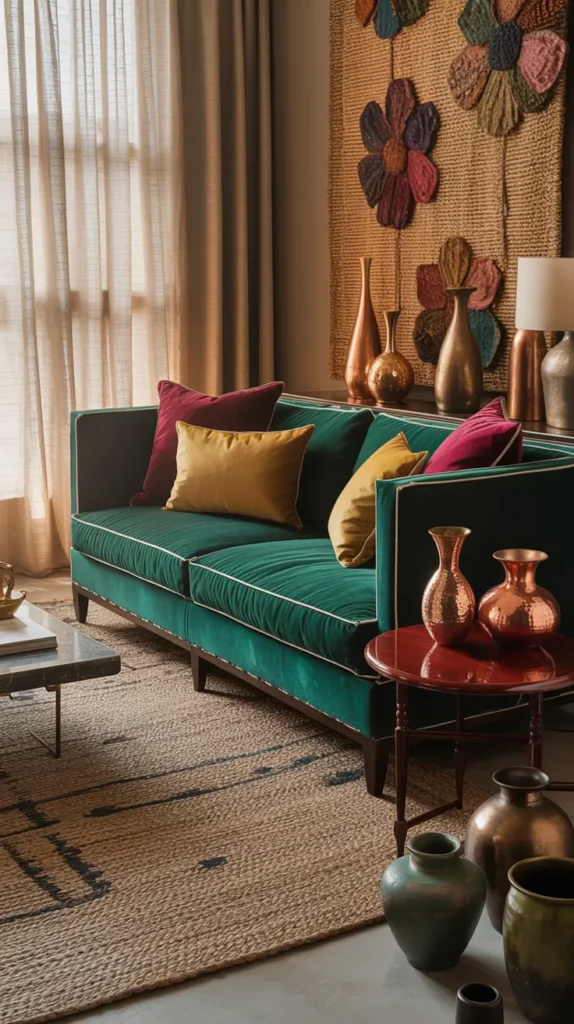
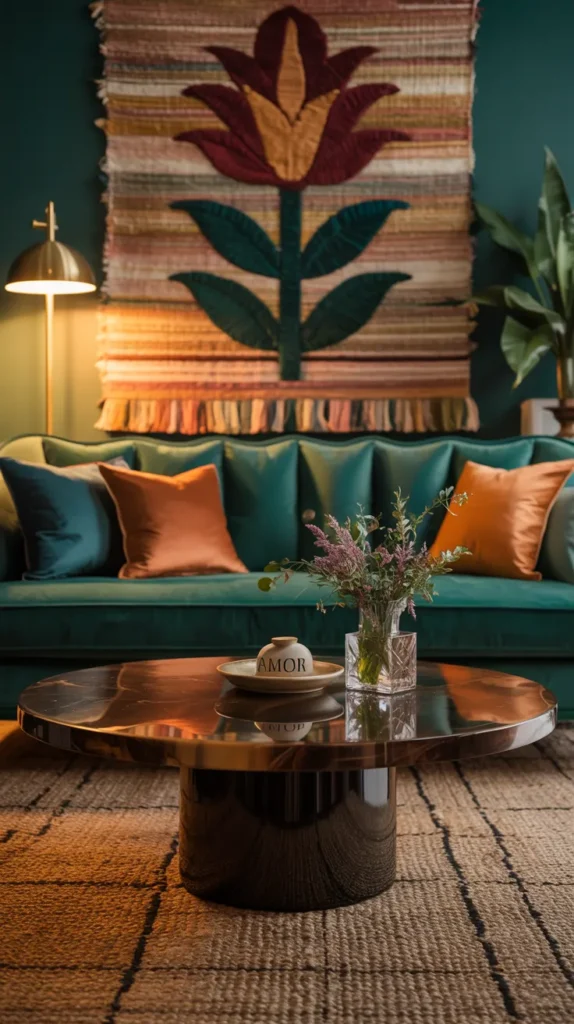
These varied textures should be distributed throughout the room—from floor to ceiling, from larger furniture pieces to smaller accessories. Think velvet sofas, silk cushions, woolen throws, leather ottomans, and ceramic accessories all coexisting in harmony.
What makes texture mixing work is contrast. A sleek, lacquered coffee table looks even more interesting when paired with a nubby, textured rug. Smooth silk curtains stand out beautifully against a textured grasscloth wallpaper. These juxtapositions create visual interest and tactile appeal.
Mix Patterns With Confidence (Yes, They Can All Work Together)
Pattern mixing is perhaps the most intimidating aspect of maximalist design, but it’s also where the magic happens. When done thoughtfully, combining different patterns creates spaces that feel layered, sophisticated, and full of personality.
Some foolproof pattern-mixing strategies:
- Combine patterns of different scales (large, medium, and small)
- Mix different pattern types (florals with geometrics, stripes with abstracts)
- Use patterns that share at least one color from your palette
- Include some solid colors to give the eye places to rest
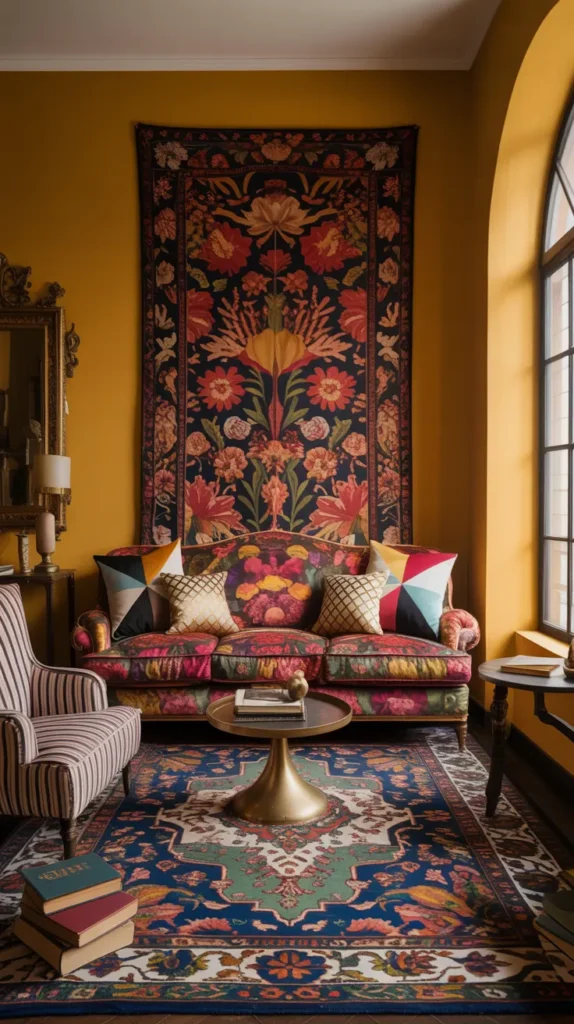
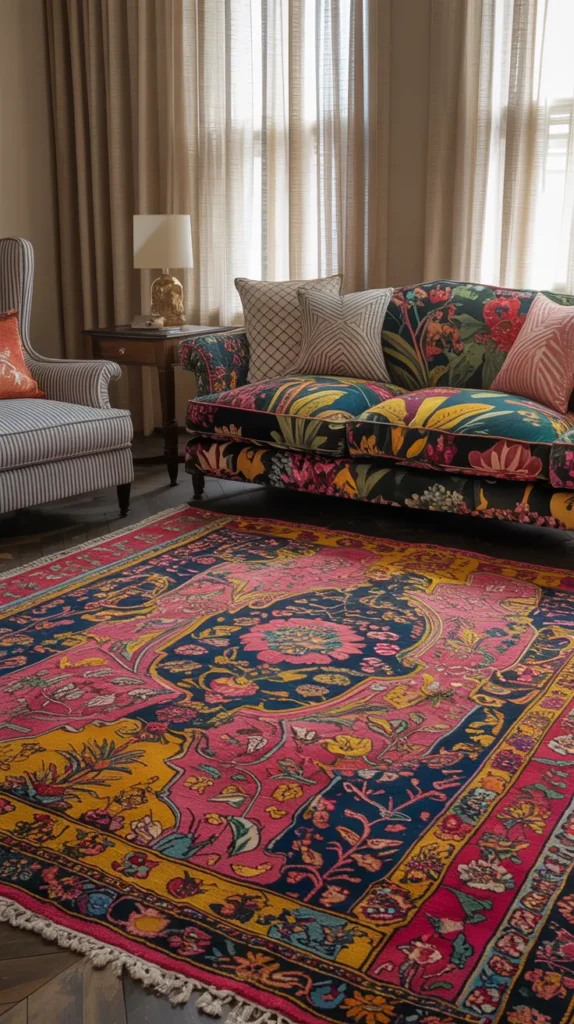
I’ve found that starting with one multi-colored patterned piece you love—like a rug or a fabric—can provide the roadmap for your entire room’s palette and pattern direction. Use this piece to identify the colors you’ll repeat elsewhere, then introduce complementary patterns that share those hues.
One of my favorite maximalist living rooms featured a vintage Turkish rug with blues, reds, and golds, which informed the rest of the space’s color scheme. The sofa was upholstered in a solid blue that matched the rug, while pillows featured smaller-scale patterns in complementary reds and golds. The curtains introduced yet another pattern—a subtle stripe that incorporated all three colors. Despite having five different patterns in one space, the room felt cohesive because of the consistent color story.
Display Your Collections (They’re Not Clutter, They’re Curated)
Maximalism gives you permission to proudly display the collections that minimalism told you to hide away. Whether you collect vintage books, global artifacts, or quirky figurines, your treasures deserve to be seen rather than stored.
The key to displaying collections in a maximalist space:
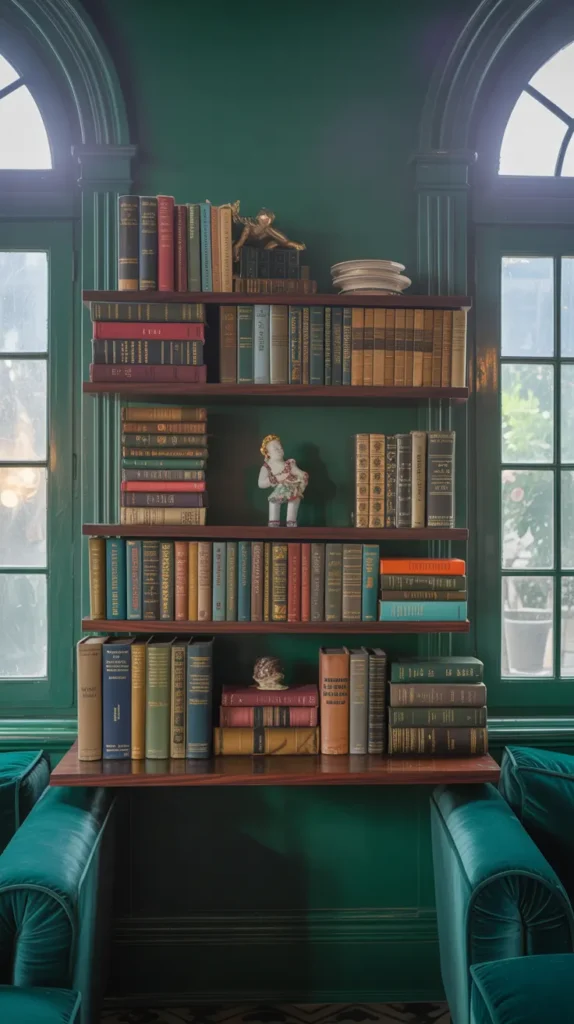
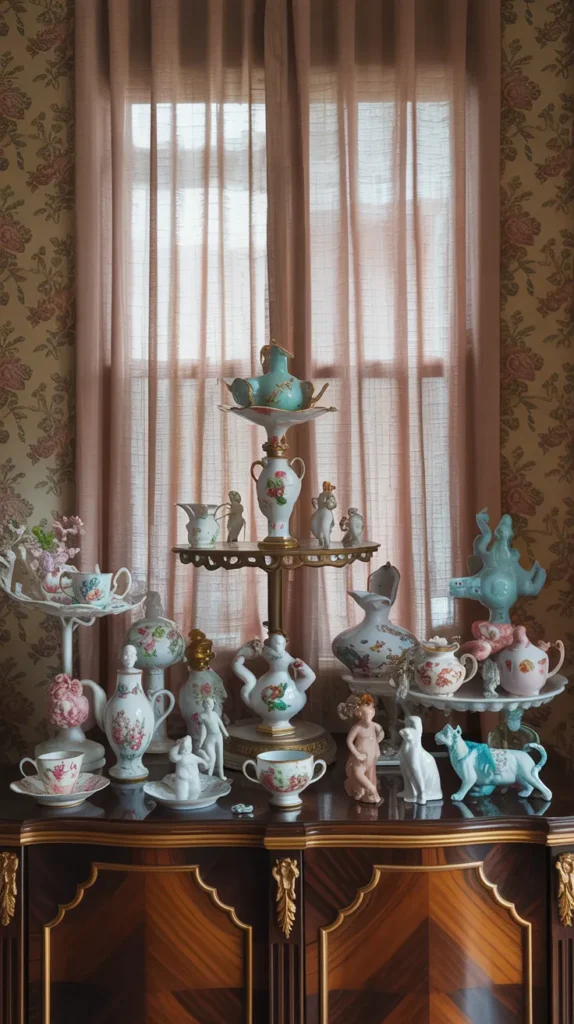
- Group similar items together rather than scattering them around the room
- Create intentional vignettes that tell a story or share a theme
- Use varying heights and depths to create visual interest
- Ensure your collections include items that tie into your overall color scheme
Remember, there’s a fine line between a thoughtfully displayed collection and clutter. The difference lies in intention and arrangement. Each grouping should feel purposeful and considered, not like items that simply landed there by accident.
I helped a friend display her extensive collection of blue and white ceramics by grouping them on a series of floating shelves against a coral wall. The bold backdrop made the collection pop, while the consistent blue and white palette kept it from feeling chaotic. We arranged the pieces in varying heights and depths, creating an installation that felt almost museum-like in its presentation.
Invest in Statement Furniture (Be the Anti-Beige)
Forget playing it safe with neutral sofas and basic coffee tables. Maximalist living rooms call for furniture with personality—pieces that command attention and spark conversation.
Statement furniture worth investing in:
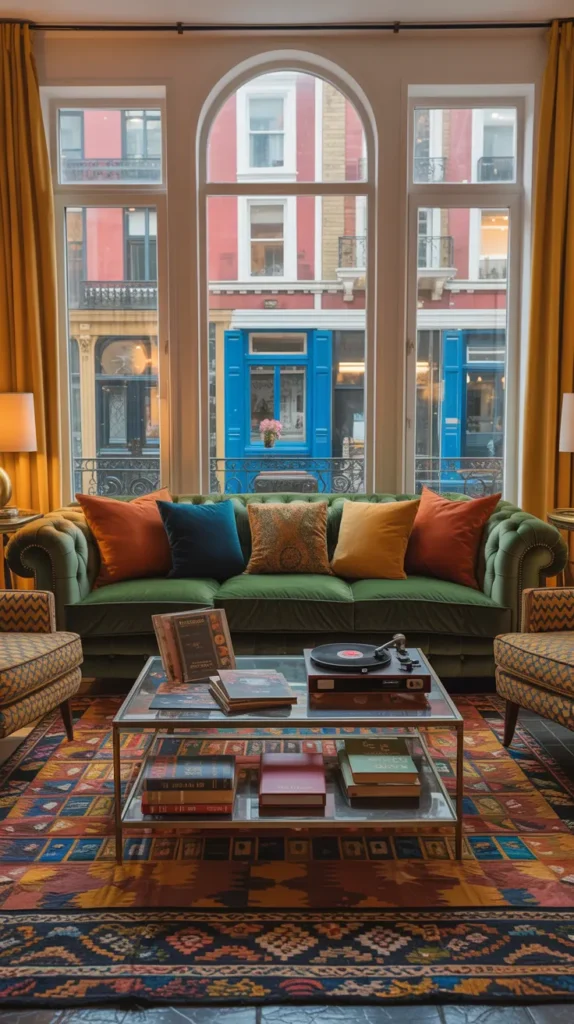
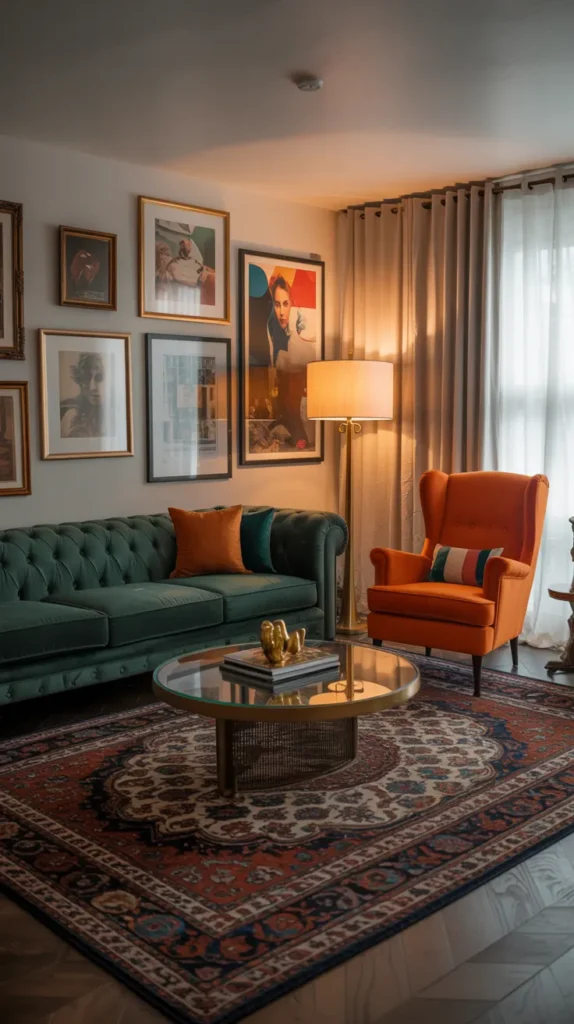
- A sofa in a bold color or striking pattern
- An oversized ottoman that doubles as a coffee table
- A vintage cabinet or bookcase with unique detailing
- Chairs with unexpected shapes or dramatic proportions
The beauty of statement furniture in a maximalist space is that it doesn’t have to match. In fact, a curated mix of pieces with different styles and origins often creates a more interesting and personal environment than a matching set ever could.
One maximalist living room I particularly admire centers around a deep green velvet Chesterfield sofa paired with mid-century armchairs and a glamorous glass and brass coffee table. These pieces shouldn’t work together on paper, but the combination feels both unexpected and perfectly right—the essence of maximalist magic.
Create a Gallery Wall on Steroids
While minimalists might display a single, perfectly-placed piece of art, maximalists understand the power of abundance when it comes to wall decor. A densely-packed gallery wall becomes its own work of art while showcasing your unique taste and interests.
For a truly maximalist gallery wall:
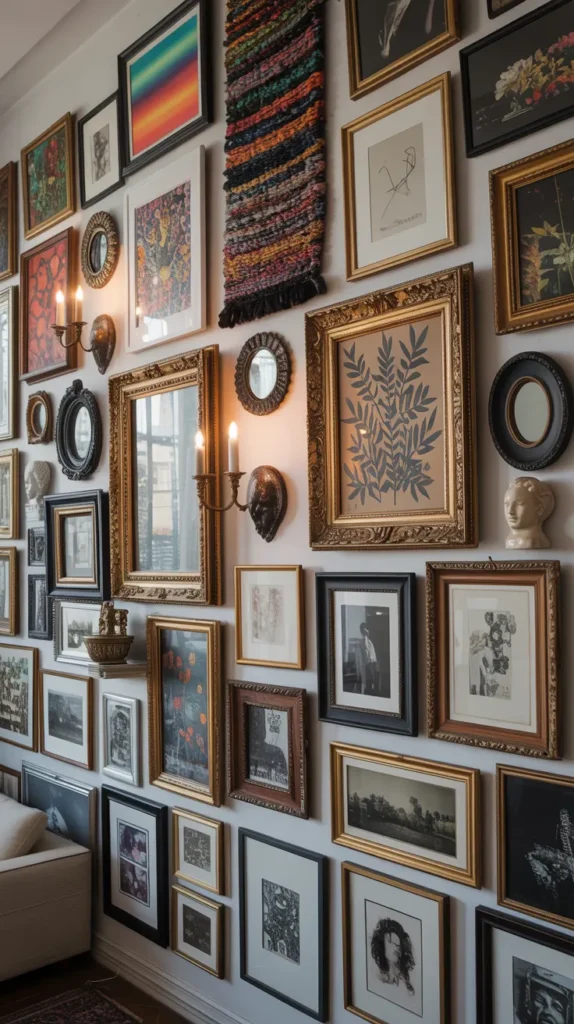
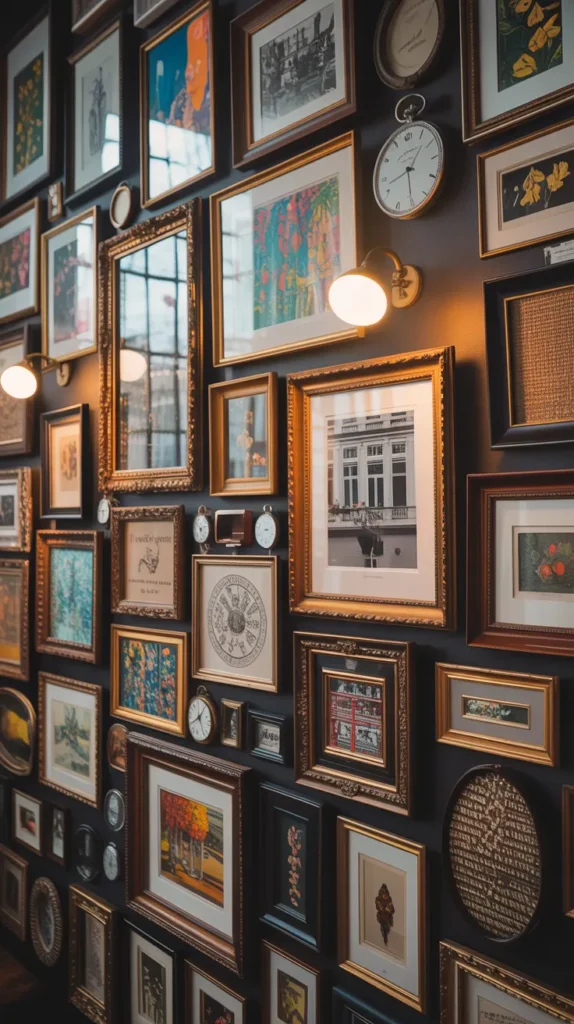
- Mix mediums: paintings, prints, photographs, textiles, and even small 3D objects
- Vary frame styles and colors (or go for a unified frame approach for a slightly more controlled look)
- Cover more wall space than you think you should—maximalist gallery walls often go floor to ceiling
- Include unexpected elements like small mirrors, wall sconces, or mounted sculptures
The most successful maximalist gallery walls tell a story about their owner. They might include family photographs, travel souvenirs, original artwork, and vintage finds—all coexisting in a visual representation of a life well-lived.
I recently created a gallery wall that wrapped around a corner and included everything from oil paintings to framed album covers to a mounted antique fan. The collection spanned different eras, styles, and subjects, but was unified by frames in complementary tones and thoughtful spacing between pieces.
Add Lush Greenery (The More Plants, The Better)
Plants are the perfect addition to maximalist spaces—they add life, texture, color, and a connection to nature that balances the more decorative elements. In true maximalist fashion, one plant is good, but many plants are better.
To incorporate greenery in maximalist style:
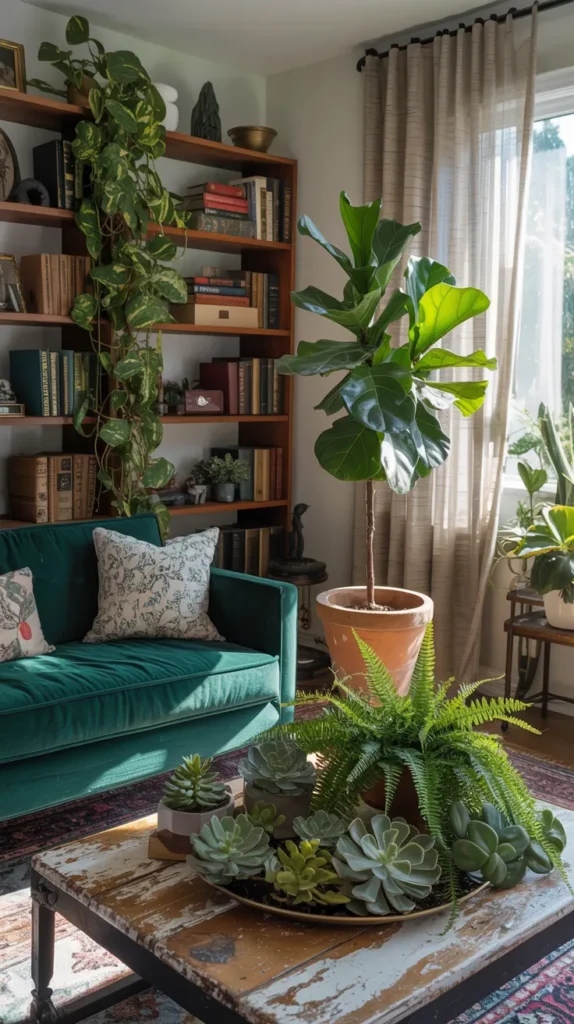
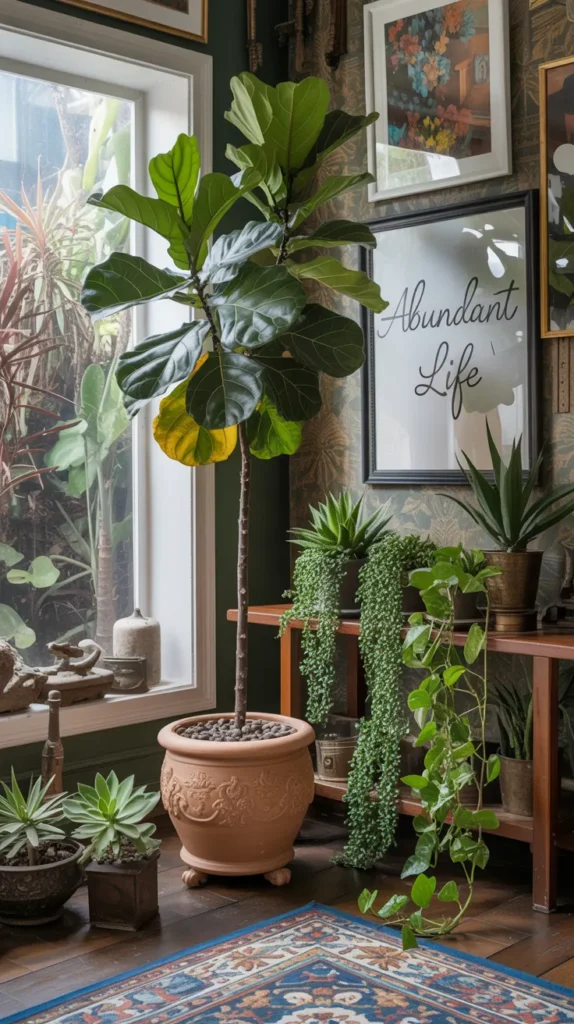
- Mix different plant varieties, sizes, and leaf shapes
- Use decorative planters that complement your color scheme
- Consider both floor plants, tabletop plants, and hanging varieties
- Don’t forget flowering plants for additional color and visual interest
Plants work particularly well in maximalist spaces because they add a organic, unstructured element among more deliberate decorative choices. They bring movement, growth, and subtle change to a room, making the space feel alive in the most literal sense.
In one plant-filled maximalist living room I admire, a massive fiddle leaf fig stands in one corner, potted in a bright blue Chinese porcelain planter. Nearby, trailing pothos cascade from a shelf, while a collection of smaller plants in brass containers clusters on the coffee table. The variety of greens adds another layer to the room’s color palette, while the different leaf structures create additional textural interest.
Embrace Luxurious Fabrics (Touch Matters as Much as Look)
Maximalist spaces appeal to all the senses, and touch is particularly important. Incorporating luxurious fabrics elevates a maximalist living room from simply “full” to genuinely opulent and inviting.
Indulgent fabrics to consider:
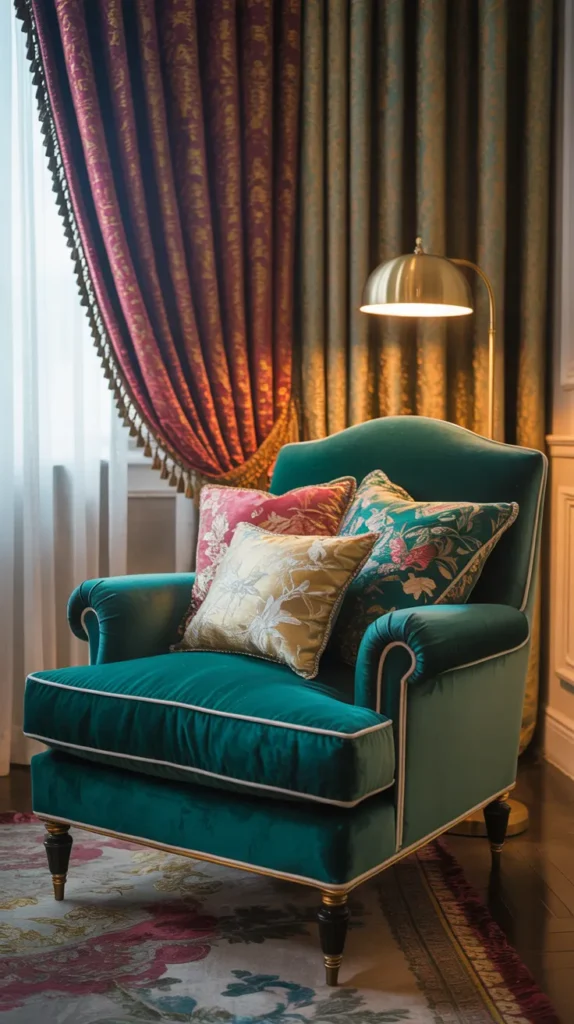
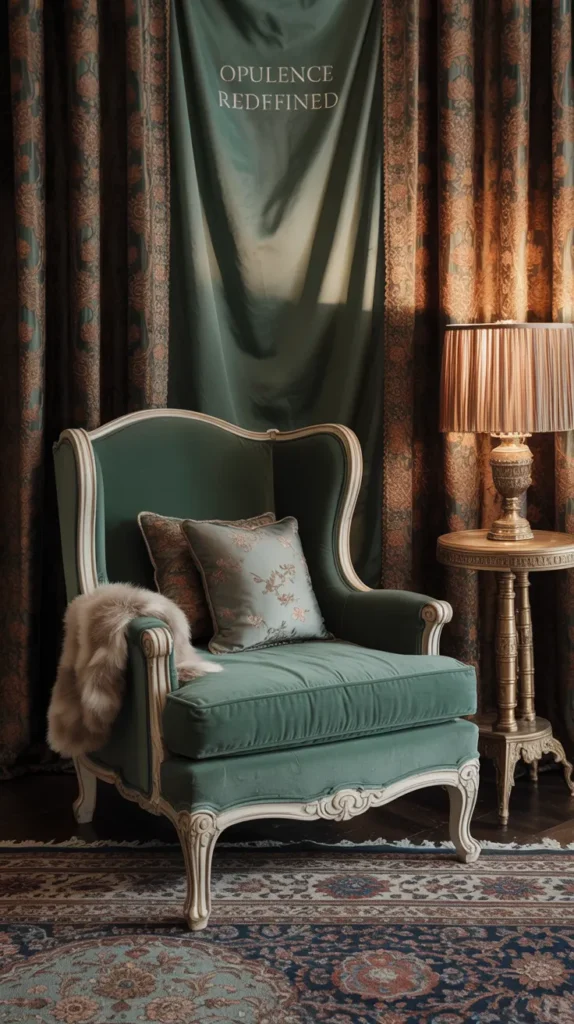
- Velvet for sofas and armchairs
- Silk for cushions and curtains
- Brocade for decorative pillows or upholstered ottomans
- Faux fur for throws and rugs
- Embroidered or beaded textiles for unique accents
The contrast between different fabric types creates a sensory richness that makes maximalist spaces so appealing. A sleek silk pillow looks even more luxurious against a nubby bouclé sofa, while a soft velvet chair becomes more inviting with a textured throw draped across it.
Don’t limit luxurious fabrics to the obvious places. Consider upholstered walls, fabric-covered lampshades, or even a canopy-style ceiling treatment in a sumptuous material. These unexpected applications take maximalist design to the next level.
Play with Dramatic Lighting (More Fixtures, More Magic)
Lighting in a maximalist space should be as layered and varied as every other element. Gone are the days of a single overhead fixture—maximalist living rooms incorporate multiple light sources at different heights to create ambiance and visual interest.
For truly magnificent maximalist lighting:
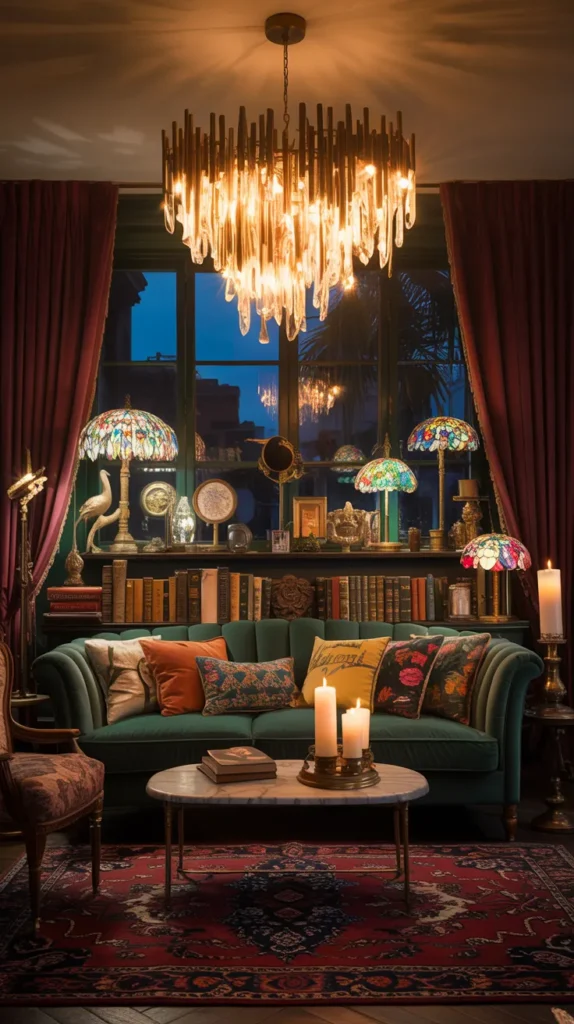
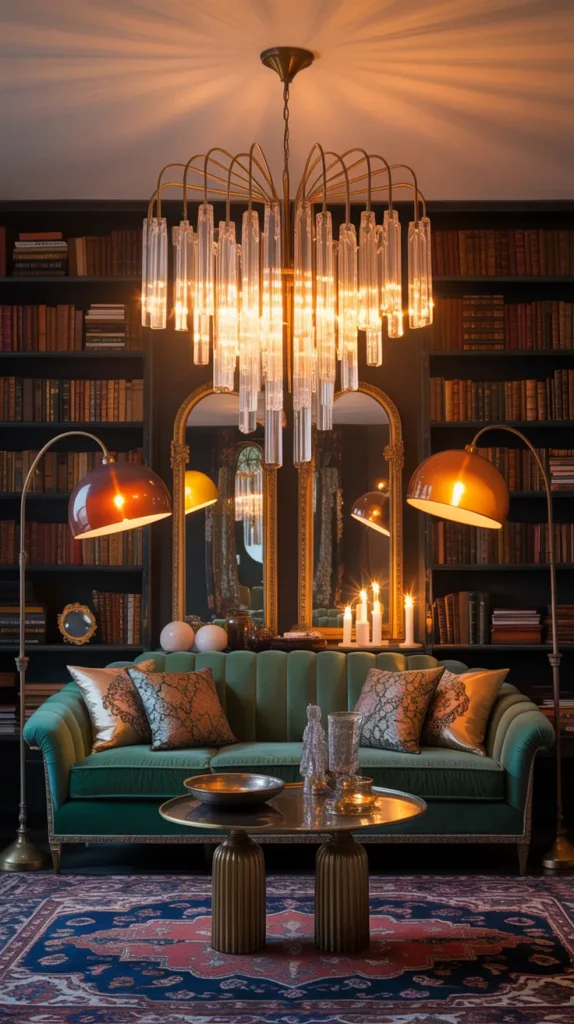
- Install a statement chandelier or pendant that serves as a room focal point
- Add multiple table lamps with decorative bases and interesting shades
- Incorporate floor lamps that double as sculptural elements
- Don’t forget sconces, string lights, and candles for additional glow
Lighting fixtures themselves should contribute to your maximalist aesthetic. Look for unique shapes, interesting materials, and designs that reflect your personal style. A vintage crystal chandelier might hang above a modernist floor lamp, while colorful table lamps add additional accent colors to your scheme.
One of the most magical maximalist living rooms I’ve seen used lighting as art, with a dramatic sputnik chandelier centered in the room, complemented by brass wall sconces, marble table lamps, and candles scattered throughout the space. The result was a room that transformed completely from day to night, with evening bringing a warm, inviting glow from multiple sources.
How to Keep Maximalism From Becoming a Mess
The biggest misconception about maximalist design is that it’s simply cluttered or messy. In reality, successful maximalism requires even more thoughtful curation than minimalism—you’re making more choices, not fewer.
To keep your maximalist living room looking designed rather than disordered:
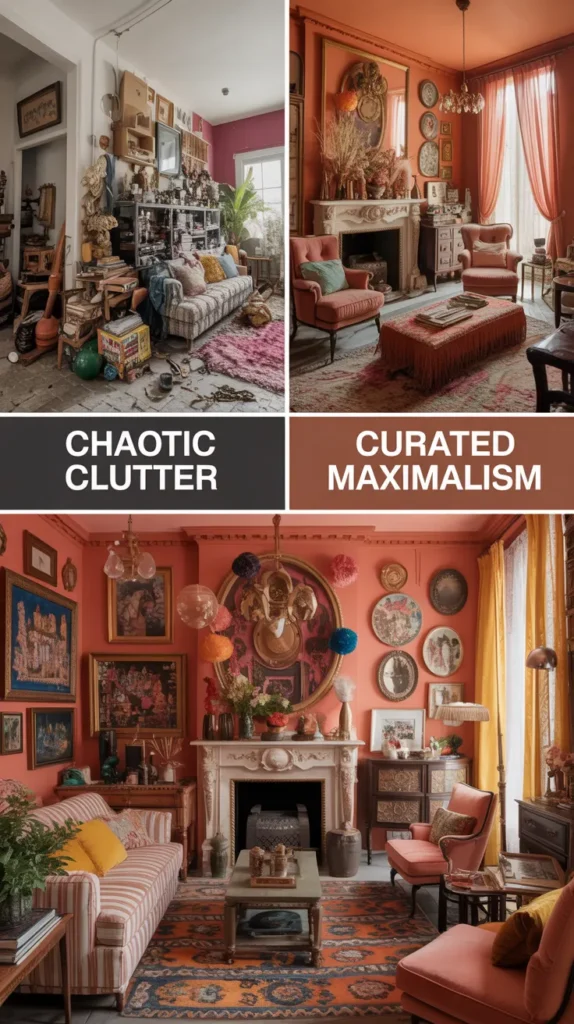
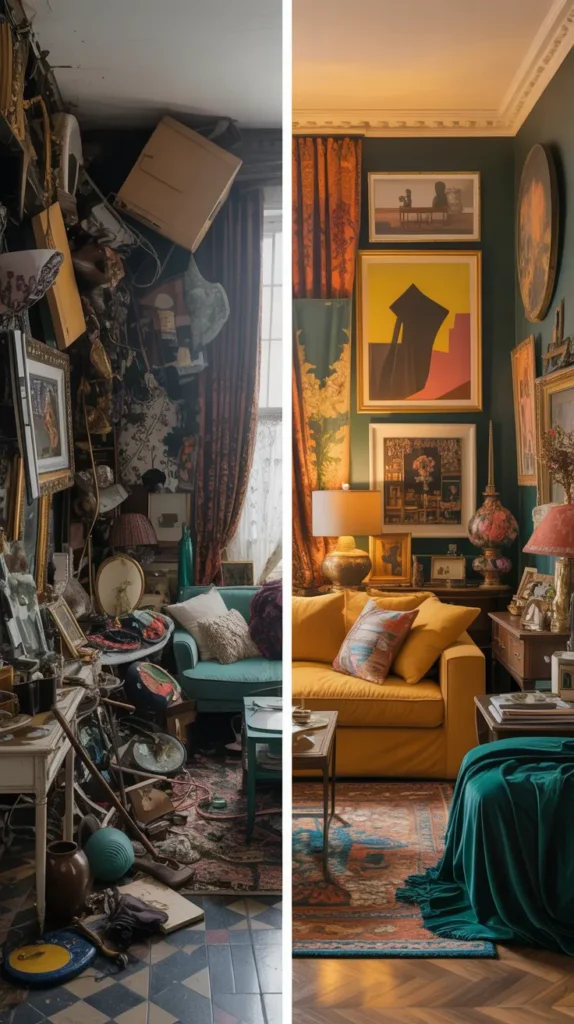
- Maintain a consistent color palette throughout the space
- Create visual rhythm by repeating colors, patterns, or materials
- Ensure every item serves either a functional or aesthetic purpose
- Edit regularly—maximalism isn’t about keeping everything, but about choosing items that contribute to your vision
- Keep some negative space to allow the eye places to rest
Remember that maximalism isn’t achieved overnight. The most authentic maximalist spaces evolve over time, with each new addition thoughtfully considered. Unlike minimalism, which often creates a “finished” space, maximalism embraces the idea that rooms can grow and change as you do.
Final Thoughts: Maximalism Is Personal, Not Prescriptive
The beauty of maximalist design is that there’s no single “right” way to do it. Your version of maximalism might be elegantly layered with antiques and art, wildly colorful with global textiles and patterns, or somewhere in between.
What matters is that your space reflects your passions, interests, and personal history. A truly successful maximalist living room couldn’t belong to anyone else—it’s as unique as a fingerprint.
So go ahead: paint that bold wall color, mix those patterns, display those collections, and create a living room that makes you smile every time you enter it. In a world of cookie-cutter interiors, your maximalist space will be a refreshing celebration of individuality and joy.
After all, life is too short for beige sofas.
